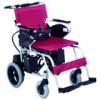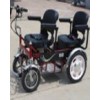小肠粘膜下固有层(作为粘膜一个构成部分的一层细胞)由不同类群的细胞组成,其中包括TH17 或 T helper 17细胞(产生白介素-17的T helpers细胞),它们是该固有层的构成成分,但却是选择性存在的。
现在,用小鼠进行的一项研究表明,共生菌(或它们所产生的ATP)激发小肠树突状细胞的一个独特亚组,以诱导白介素-6的产生和TGFbeta的激发,从而促进TH17细胞的局部分化。另外,外生ATP会通过增强的TH17分化使结肠炎病情加重。
这些发现凸显了共生菌和ATP在免疫疾病中的重要性,并且还有可能帮助确定异常TH17细胞响应导致包括炎性肠道疾病在内的免疫疾病的机理。(生物谷Bioon.com)
生物谷推荐原始出处:
Nature 455, 808-812 (9 October 2008) | doi:10.1038/nature07240
ATP drives lamina propria TH17 cell differentiation
Koji Atarashi1,7, Junichi Nishimura1,7, Tatsuichiro Shima2, Yoshinori Umesaki2, Masahiro Yamamoto1,3, Masaharu Onoue2, Hideo Yagita4, Naoto Ishii5, Richard Evans6, Kenya Honda1,3 & Kiyoshi Takeda1,3
1 Laboratory of Immune Regulation, Graduate School of Medicine, Osaka University, 2-2 Yamadaoka, Suita, Osaka 565-0871, Japan
2 Yakult Central Institute for Microbiological Research, Yaho 1796, Kunitachi, Tokyo 186-8650, Japan
3 WPI Immunology Frontier Research Center, Osaka University, Osaka 565-0871, Japan
4 Department of Immunology, Juntendo University School of Medicine, 2-1-1 Hongo, Bunkyo-ku, Tokyo 113-8421, Japan
5 Department of Microbiology and Immunology, Tohoku University Graduate School of Medicine, 2-1 Seiryo-machi, Aoba-ku, Sendai 980-8575, Japan
6 Department of Cell Physiology and Pharmacology, Henry Wellcome Building 2/59b, University of Leicester, Leicester LE1 9HN, UK
7 These authors contributed equally to this work.
Interleukin (IL)-17-producing CD4+ T lymphocytes (TH17 cells) constitute a subset of T-helper cells involved in host defence and several immune disorders1, 2. An intriguing feature of TH17 cells is their selective and constitutive presence in the intestinal lamina propria3. Here we show that adenosine 5'-triphosphate (ATP) that can be derived from commensal bacteria activates a unique subset of lamina propria cells, CD70highCD11clow cells, leading to the differentiation of TH17 cells. Germ-free mice exhibit much lower concentrations of luminal ATP, accompanied by fewer lamina propria TH17 cells, compared to specific-pathogen-free mice. Systemic or rectal administration of ATP into these germ-free mice results in a marked increase in the number of lamina propria TH17 cells. A CD70highCD11clow subset of the lamina propria cells expresses TH17-prone molecules, such as IL-6, IL-23p19 and transforming-growth-factor-β-activating integrin-αV and -β8, in response to ATP stimulation, and preferentially induces TH17 differentiation of co-cultured naive CD4+ T cells. The critical role of ATP is further underscored by the observation that administration of ATP exacerbates a T-cell-mediated colitis model with enhanced TH17 differentiation. These observations highlight the importance of commensal bacteria and ATP for TH17 differentiation in health and disease, and offer an explanation of why TH17 cells specifically present in the intestinal lamina propria.







